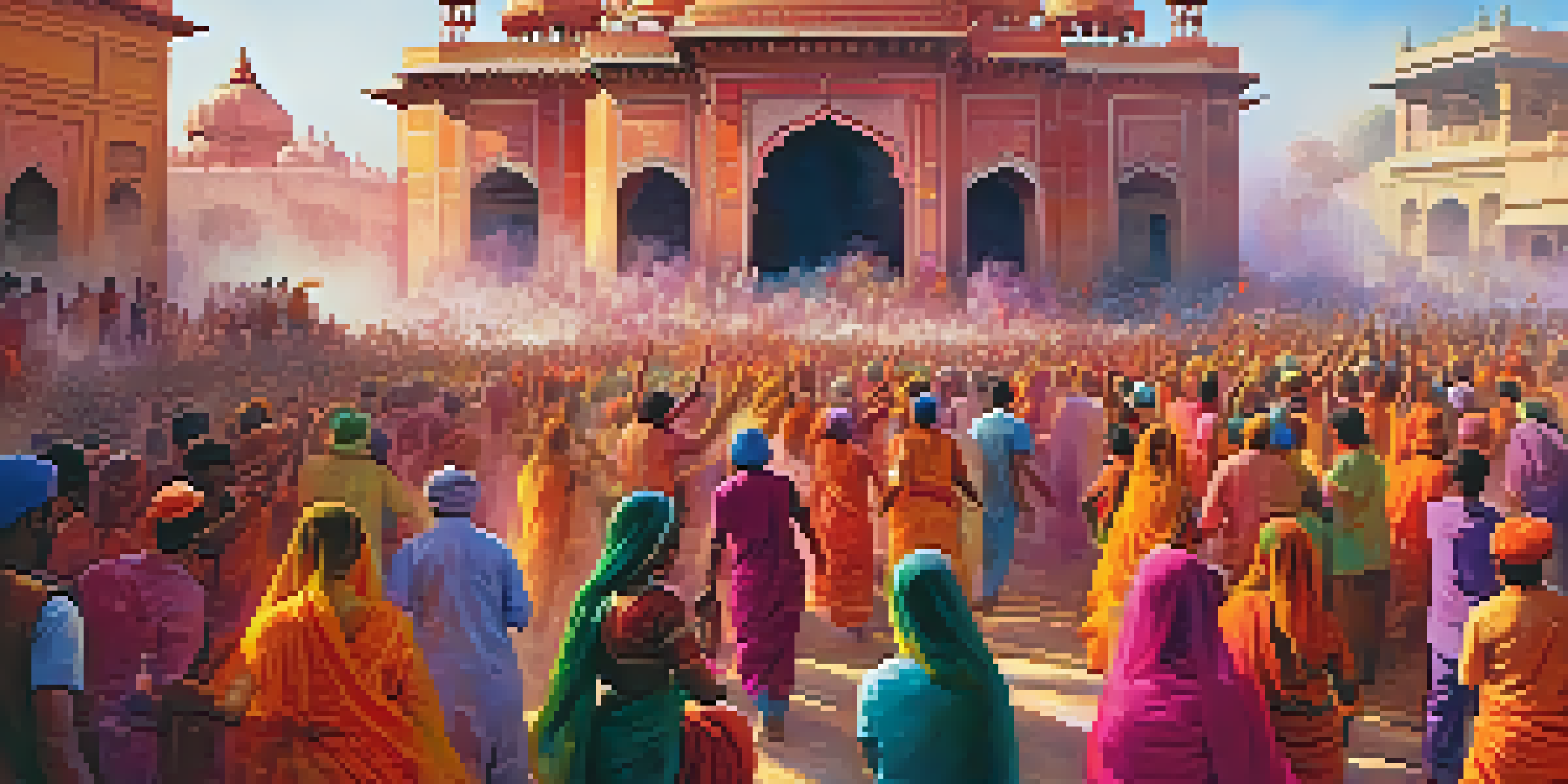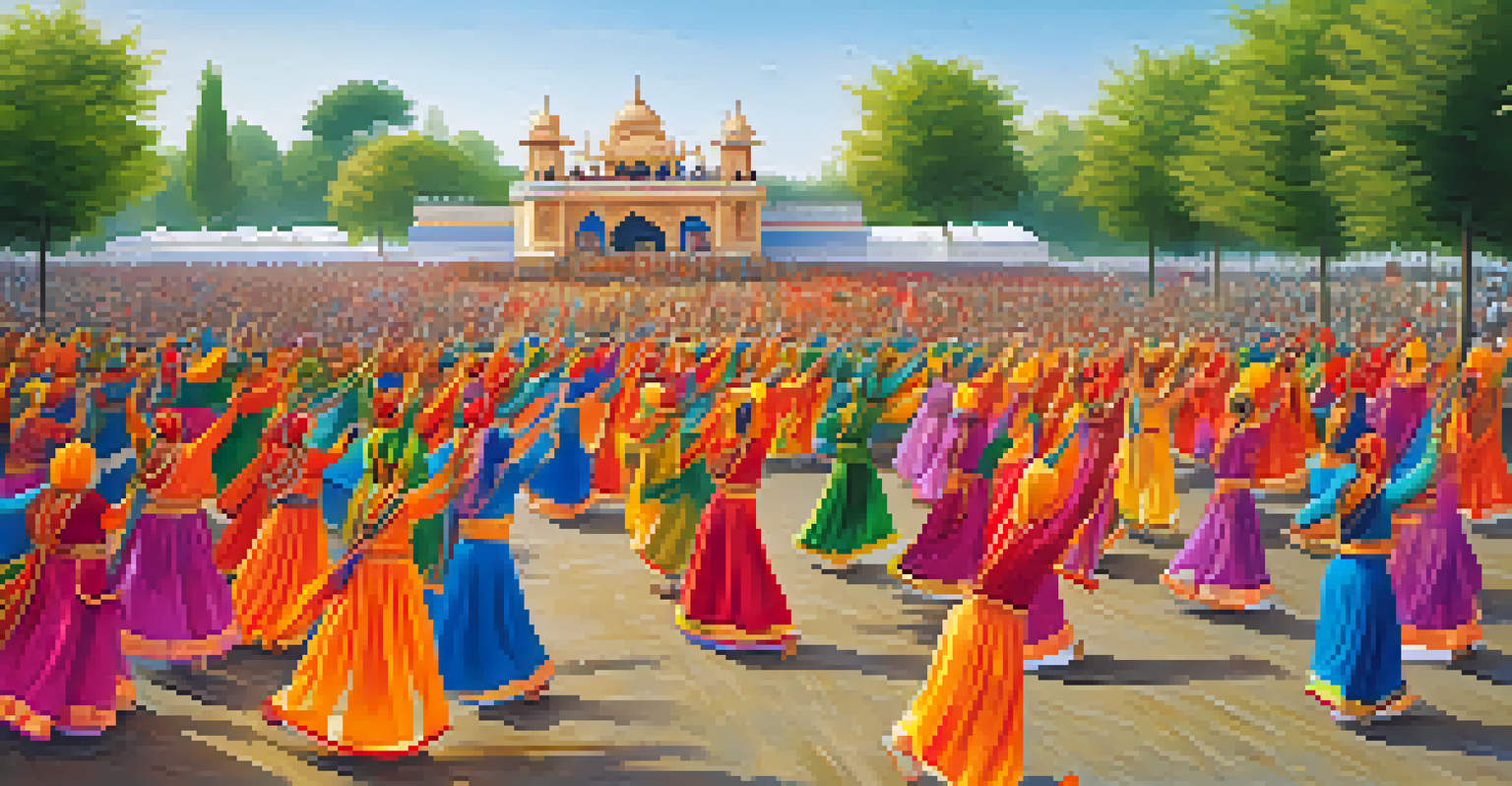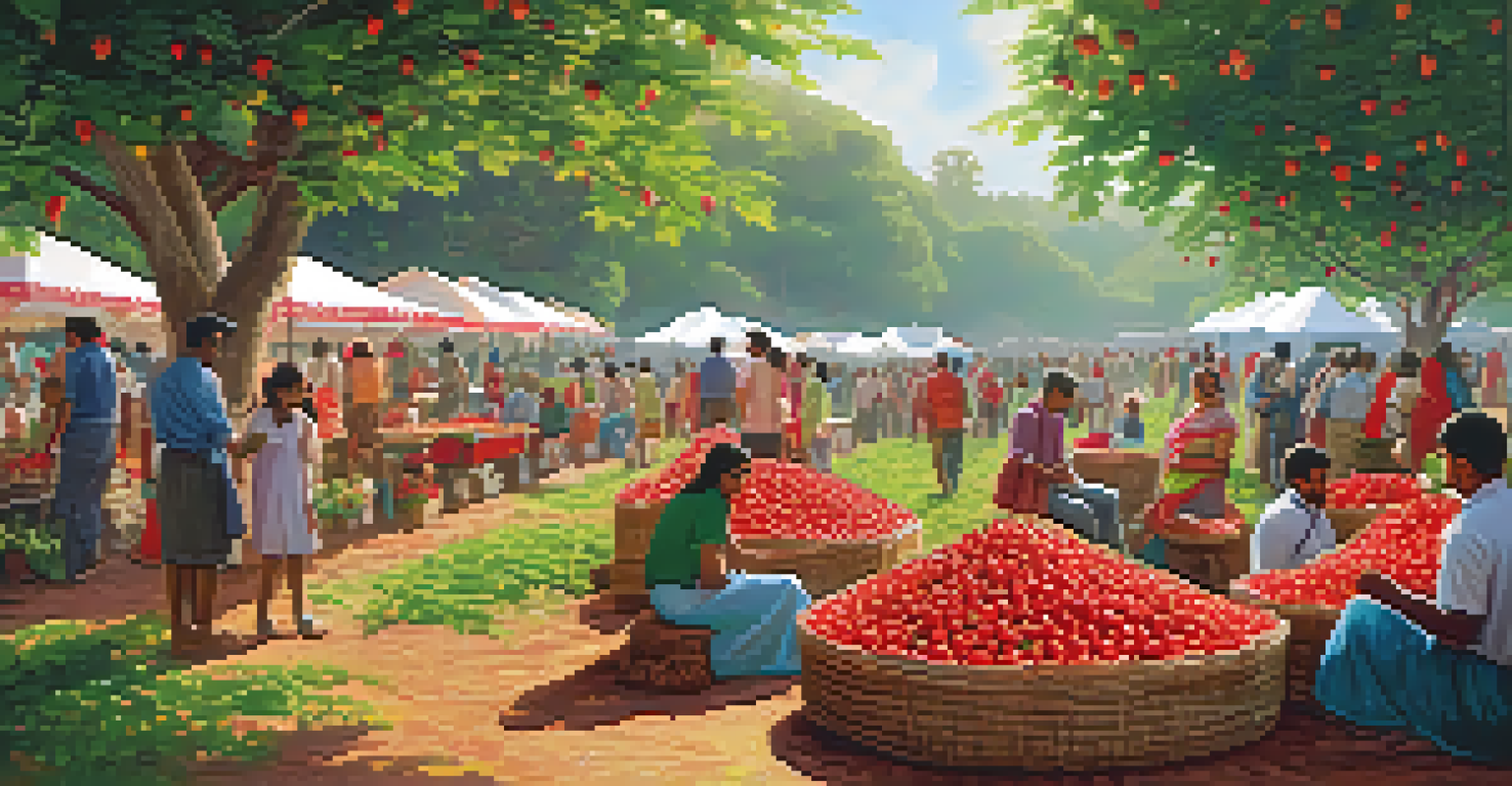Spring Blossoms: Festivals and Events Across India in Spring

Holi: The Festival of Colors Welcomes Spring
Holi, the exuberant festival of colors, marks the arrival of spring in India. Celebrated with joy and enthusiasm, it signifies the victory of good over evil and the end of winter's chill. People gather to throw colored powders, dance, and enjoy festive sweets, creating a lively atmosphere across the country.
Spring is nature's way of saying, 'Let's party!'
In cities like Mathura and Vrindavan, renowned for their Holi celebrations, the festivities take on an almost magical quality. Here, the playful spirit of Lord Krishna is embodied as locals and tourists alike join in the fun. The vibrant colors that fill the air symbolize new beginnings, making Holi a truly beautiful celebration of life.
As the sun shines brightly, families come together to celebrate with music, dance, and delicious feasts. It's a time to forgive, forget, and embrace the warmth of relationships, making Holi not just a festival, but a heartfelt experience that marks the joyous arrival of spring.
Baisakhi: Harvest Festival in Punjab
Baisakhi, celebrated primarily in Punjab, is a harvest festival that welcomes the arrival of spring and the new crop season. On this day, farmers express gratitude for their bountiful harvest and seek blessings for future prosperity. The festival is marked by vibrant processions, traditional folk dances, and joyous celebrations.

During Baisakhi, the streets come alive with the energetic beats of Bhangra and Gidda, where people dress in colorful attire and dance in unison. The atmosphere is filled with excitement as communities come together to celebrate their rich agricultural heritage. It's not just a celebration of crops, but a display of cultural unity and pride.
Spring Festivals Celebrate Renewal
Various festivals in India, such as Holi and Baisakhi, joyously mark the arrival of spring, emphasizing themes of renewal, community, and cultural heritage.
Additionally, Baisakhi holds significance in the Sikh religion, as it commemorates the formation of the Khalsa in 1699. Temples are adorned, and special prayers are held, reinforcing the festival's deep-rooted spiritual essence. This blend of agricultural celebration and spiritual observance makes Baisakhi a truly memorable event in the spring calendar.
Panchgani Strawberry Festival: A Taste of Spring
In the scenic hill station of Panchgani, the Strawberry Festival is a delightful celebration of the season's beloved berry. Held annually, this festival brings together locals and tourists to indulge in all things strawberry—from fresh fruit to delectable desserts. It's a sweet treat that highlights the region's agricultural bounty.
The earth laughs in flowers.
Visitors can participate in a range of activities, including strawberry picking, cooking competitions, and live music performances. Families often enjoy picnics amidst lush green fields, making it a perfect outing for food enthusiasts and nature lovers alike. The festival showcases the community's spirit and love for their local produce.
As spring blossoms in Panchgani, the vibrant red strawberries symbolize freshness and new beginnings. The festival not only promotes local farming but also fosters a sense of unity among attendees, making it a cherished event that captures the essence of spring in India.
Maha Shivratri: A Spiritual Celebration of Spring
Maha Shivratri is a significant Hindu festival that occurs in spring, celebrating the divine union of Lord Shiva and Goddess Parvati. Devotees observe fasting and night-long vigils, offering prayers and chanting mantras to seek blessings. The festival holds immense spiritual significance, drawing millions to temples across India.
In places like Varanasi and Ujjain, the atmosphere during Maha Shivratri is electric, with devotees decorating Shiva temples with flowers and lighting oil lamps. The festivities include cultural performances and traditional music, creating a vibrant spiritual environment. It's a time for reflection, devotion, and community bonding.
Culinary Delights of Spring Festivals
Celebrations like Navroz and Onam showcase traditional foods that bring families together, highlighting the rich culinary traditions associated with the season.
This festival not only marks the transition from winter to spring but also symbolizes the victory of light over darkness. As people immerse themselves in spirituality and traditions, Maha Shivratri becomes a profound celebration that resonates with the essence of renewal and hope that spring brings.
Bihu: Assam's Spring Festival of Abundance
Bihu is a vibrant festival celebrated in Assam, marking the Assamese New Year and the arrival of spring. It is a time for joyous celebrations, with traditional dance, music, and feasting. The festival showcases the rich cultural heritage of Assam, highlighting the region's agricultural roots.
During Bihu, the fields come alive with energetic Bihu dances, where men and women dress in traditional attire, showcasing their dance skills while celebrating the harvest. The sweet sound of traditional instruments fills the air, creating an infectious atmosphere of happiness and camaraderie. It's a time when communities come together to rejoice and give thanks.
Food plays a central role in the festivities, with traditional dishes prepared and shared among families and friends. The celebration of Bihu reflects the harmony between nature and human life, making it a beautiful representation of spring's abundance and joy in Assam.
Navroz: Parsi New Year Celebrations
Navroz, the Parsi New Year, is celebrated in spring to mark the arrival of the new year in the Zoroastrian calendar. This festival is a time for renewal and reflection, celebrated with family gatherings, prayers, and festive meals. Parsis across India come together to honor their traditions and cultural heritage.
The celebration typically begins with a special prayer at the fire temple, followed by a grand feast featuring traditional Parsi dishes. Families prepare delicacies such as dhansak and salli boti, making it a culinary delight. The aroma of spices fills the air as everyone indulges in the flavors of their rich cultural cuisine.
Cultural Unity in Vibrant Celebrations
Festivals like Bihu and Gudi Padwa not only commemorate agricultural abundance but also foster a sense of unity and cultural pride among diverse communities.
Navroz also emphasizes the importance of community and togetherness. It's a time to strengthen bonds with family and neighbors, share joy, and express gratitude for life's blessings. The warmth and love that envelops the festivities make Navroz a heartwarming celebration of spring in the Parsi community.
Onam: Kerala's Harvest Festival in Spring
Onam is a vibrant festival celebrated in Kerala that marks the harvest season and the homecoming of the legendary King Mahabali. This ten-day festival, celebrated in the month of Chingam, brings together families and communities to rejoice in the abundance of nature. The festival is rich in cultural traditions and is a visual feast of colors and flavors.
During Onam, elaborate floral arrangements known as 'Pookalam' are created in homes, symbolizing prosperity and welcome. Traditional dance forms like Kathakali and Thiruvathira add to the festive atmosphere, showcasing Kerala's rich cultural heritage. The highlight is the grand Onam Sadya, a feast served on banana leaves, featuring a variety of vegetarian dishes.

Onam offers a unique blend of spiritual reflection and joyous celebration, uniting people of all backgrounds. The festival culminates in the famous Vallam Kali, or boat races, where teams compete in colorful snake boats, creating an exhilarating spectacle. This celebration of unity and abundance makes Onam a cherished event that perfectly encapsulates the spirit of spring in Kerala.
Gudi Padwa: Maharashtrian New Year Festivities
Gudi Padwa marks the Marathi New Year and is celebrated with great enthusiasm in Maharashtra. This spring festival symbolizes the arrival of spring and the harvest season, bringing a sense of renewal and hope. Families decorate their homes with colorful rangolis and hoist the Gudi, a decorated pole that signifies prosperity.
The day begins with traditional rituals, including bathing and wearing new clothes, followed by family gatherings and feasts. Special dishes like puri and shrikhand are prepared, making it a culinary delight. The festive spirit is further amplified by folk dances and music, with people coming together to celebrate their culture.
Gudi Padwa is not just a celebration of the new year; it's a time for families to reflect on the past and set intentions for the future. The warmth and joy shared during this festival resonate with the essence of spring, making it a significant event in the Marathi calendar.